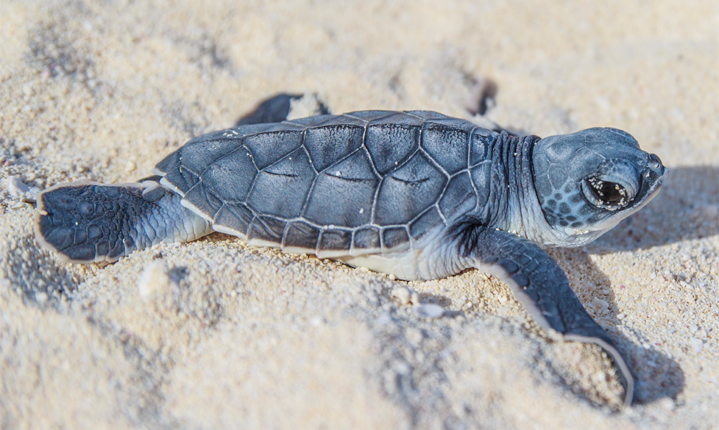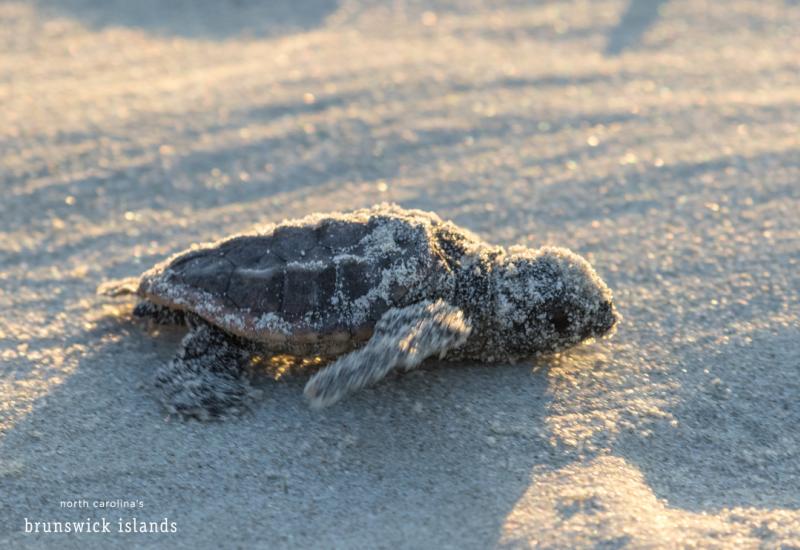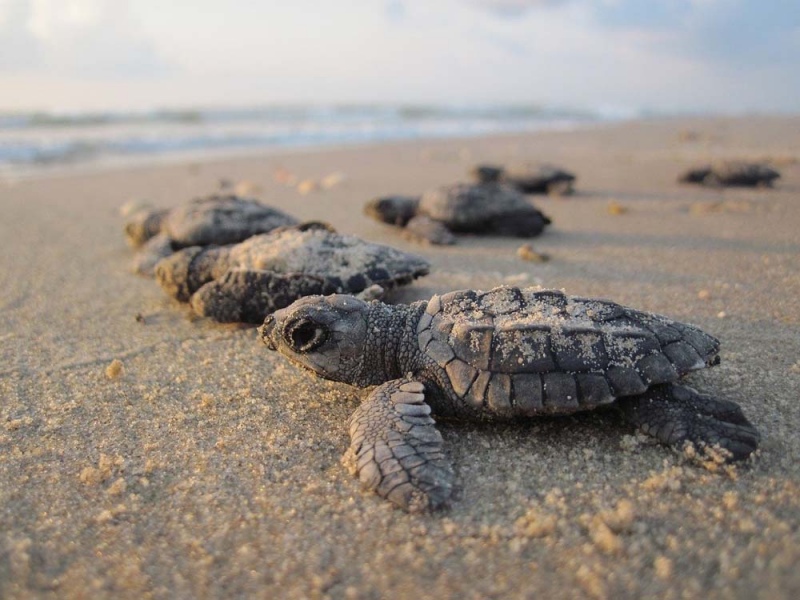Sea turtles typically hatch in North Carolina from May to October. The warm sands of North Carolina’s beaches provide the ideal nesting conditions for sea turtles, attracting them to lay their eggs and hatch during the summer months.
Visitors to the state’s coastal areas during this time may have the opportunity to witness the incredible sight of baby sea turtles emerging from their nests and making their way to the ocean. The conservation efforts and monitoring programs in place also aim to protect these endangered creatures and ensure their safe journey into the sea.
Understanding the timing of sea turtle hatching in North Carolina can offer valuable insights for both locals and tourists who wish to witness this natural wonder firsthand.
Importance Of Sea Turtles In North Carolina
Sea turtles play a vital role in North Carolina’s ecosystem, particularly during the hatching season. The hatching process occurs in North Carolina beaches from late spring to early fall, contributing to the conservation efforts and biodiversity of the region.
Sea turtles are an integral part of the marine ecosystem in North Carolina. They play a crucial role in maintaining the balance of the ecosystem, and their presence also benefits the tourism and economy of the state. In this section, we will explore the importance of sea turtles in North Carolina in detail.Ecosystem Balance
Sea turtles are known as “keystone species” in the marine ecosystem. They help maintain the balance of the ecosystem by feeding on seagrasses, which prevents overgrowth and provides a habitat for small marine organisms. Furthermore, sea turtles are prey for larger marine animals, and their absence can impact the food chain. Their nesting also contributes to the health of the ecosystem by providing essential nutrients to the dunes and beaches.Tourism And Economy
North Carolina’s beaches are famous for their sea turtle nesting, attracting tourists from all over the world. Sea turtle conservation efforts have also led to the development of eco-tourism, which provides a sustainable source of income for the local economy. In addition, the fishing industry benefits from the presence of sea turtles, as they help maintain the abundance and diversity of fish populations. In conclusion, sea turtles play a vital role in North Carolina’s ecosystem and economy. It is crucial to continue conservation efforts to protect them and maintain the delicate balance of the marine ecosystem.Life Cycle Of Sea Turtles
Life Cycle of Sea Turtles: Sea turtles have a remarkable life cycle that includes nesting, incubation, and hatching. Understanding this cycle is crucial for their conservation.
Nesting Process
Female sea turtles crawl onto sandy beaches to lay their eggs in carefully dug nests, a process known as nesting.
Incubation Period
Once the eggs are laid, they are left to incubate in the warm sand for around 60 days, with the temperature determining the sex of the hatchlings.
Sea Turtle Species In North Carolina
North Carolina is home to a variety of sea turtle species, each with its own unique characteristics and nesting habits. Understanding the different sea turtle species in North Carolina is essential for conservation efforts and for those hoping to witness the wonder of sea turtle hatchings along the state’s coastline.
Loggerhead Turtles
Loggerhead turtles are the most common sea turtle species to nest along the North Carolina coast. These majestic creatures typically nest from late May to early August. With an average weight of 250 pounds, loggerheads are known for their large heads and powerful jaws, which allow them to feed on hard-shelled prey such as conch and whelk.
Green Turtles
Green turtles are another notable sea turtle species found in North Carolina. While less common than loggerheads, these turtles can be seen nesting along the state’s beaches from June to August. Recognizable by their heart-shaped shells and predominantly herbivorous diet, green turtles play a vital role in maintaining the health of seagrass beds and coral reefs.
Factors Affecting Sea Turtle Hatching
Sea turtle hatching in North Carolina is influenced by factors like temperature, nest location, and incubation period. These elements play a crucial role in determining the timing of when sea turtles hatch along the coast. Understanding these factors is vital for conservation efforts.
Factors Affecting Sea Turtle Hatching Sea turtle hatching is a fascinating and delicate process that is influenced by several key factors. Understanding these factors is crucial for the conservation and protection of these endangered creatures. The timing and success of sea turtle hatching in North Carolina are determined by various elements such as temperature and predators. Temperature The temperature of the sand plays a crucial role in the development and hatching of sea turtle eggs. Warmer temperatures typically result in the faster incubation and hatching of eggs, while cooler temperatures can delay the process. However, extreme heat can be detrimental, leading to the mortality of the embryos. The ideal temperature range for sea turtle nests is around 85-90°F (29-32°C). Fluctuations in temperature can significantly impact the hatching success of sea turtle eggs. Predators Predation is another significant factor affecting sea turtle hatching. Once the eggs are laid, they are vulnerable to various predators such as birds, crabs, and other animals that may dig up the nests and consume the eggs. Additionally, hatchlings face threats from predators as they make their way to the ocean. Natural predators such as birds, raccoons, and fish pose a significant risk to the survival of sea turtle hatchlings. Human activities, such as coastal development and artificial lighting, can also disrupt the natural nesting and hatching process, increasing the vulnerability of sea turtles to predators. Understanding the impact of temperature and predators on sea turtle hatching is vital for implementing effective conservation efforts and ensuring the survival of these magnificent creatures.Conservation Efforts For Sea Turtles
Conservation efforts for sea turtles in North Carolina are crucial to protect these endangered species and their nesting habitats. The state has implemented various initiatives to ensure the survival of sea turtles, focusing on nesting habitat protection and community involvement.
Nesting Habitat Protection
The nesting habitats of sea turtles are carefully monitored and protected in North Carolina. Coastal regulations and conservation programs are in place to safeguard the beaches where sea turtles lay their eggs. These efforts aim to minimize disturbances to nesting sites and ensure a safe environment for the hatchlings to emerge.
Community Involvement
Community participation is essential in the conservation of sea turtles. Local residents, businesses, and organizations are actively involved in beach cleanups, nest monitoring, and educational programs. By raising awareness and promoting responsible beach behavior, the community contributes to the protection of sea turtle nesting habitats.
.36c9563e.jpg)
Credit: www.visitnc.com
Monitoring And Research
Monitoring and research are vital aspects of understanding the nesting and hatching behavior of sea turtles in North Carolina. By tracking technologies and conducting scientific studies, researchers can gather valuable data to aid in the conservation efforts of these endangered species.
Tracking Technologies
Tracking technologies play a crucial role in monitoring the movement and behavior of sea turtles. Various methods, such as satellite tags, acoustic telemetry, and GPS trackers, are employed to track the migration patterns and nesting habits of sea turtles. These technologies provide valuable insights into the habitats and behaviors of these magnificent creatures, enabling researchers to make informed conservation decisions.
Scientific Studies
Scientific studies conducted on sea turtles involve a wide range of research activities, including nesting surveys, genetic studies, and behavioral observations. These studies provide essential data on population dynamics, reproductive success, and the impact of environmental factors on sea turtle nesting sites. By gaining a deeper understanding of these aspects, researchers can develop effective conservation strategies to protect sea turtle populations in North Carolina.
Best Practices For Sea Turtle Watching
When observing sea turtles hatch in North Carolina, it’s crucial to follow responsible tourism guidelines and participate in educational programs to ensure the well-being of these magnificent creatures.
Responsible Tourism Guidelines
- Keep a safe distance from nesting sites and hatchlings.
- Avoid using flash photography, as it can disturb the turtles.
- Do not disturb the nests or tamper with the eggs.
- Dispose of trash properly to prevent harm to the marine environment.
Educational Programs
- Participate in guided tours led by trained experts.
- Learn about sea turtle conservation efforts in the region.
- Understand the importance of protecting these endangered species.
- Support local initiatives aimed at preserving sea turtle habitats.

Credit: www.livinginbrunswickcounty.com
Upcoming Events For Sea Turtle Hatchings
Get ready for the upcoming sea turtle hatchings along the North Carolina coast. The hatching season typically runs from late May through August, with peak activity in June and July. You can witness these incredible events at various beaches and conservation areas in the region.
Sea turtle hatchings are a spectacular event to witness, and North Carolina is one of the few places where you can experience it firsthand. The nesting season begins in May and lasts until late August, and the hatchlings usually emerge from their nests between July and October. Here are some of the upcoming events for sea turtle hatchings in North Carolina.Local Hatchling Releases
Local hatchling releases are one of the most popular events for sea turtle hatchings in North Carolina. These events are organized by local organizations and allow visitors to witness the hatchlings being released into the ocean. These events are usually free and open to the public, but registration is required. Visitors can learn about the life cycle of sea turtles, their conservation status, and the threats they face.Educational Workshops
Educational workshops are another great way to learn about sea turtle hatchings in North Carolina. These workshops are usually organized by local organizations and provide visitors with an opportunity to learn about the biology, behavior, and conservation of sea turtles. Visitors can learn about the importance of sea turtles to the ecosystem, the threats they face, and the efforts being made to protect them. These workshops are usually free and open to the public, but registration is required.Conclusion
If you are planning to visit North Carolina during the sea turtle nesting season, make sure to attend one of the upcoming events for sea turtle hatchings. These events provide visitors with a unique opportunity to witness the miracle of life and learn about the importance of sea turtle conservation.
Credit: www.ncbrunswick.com
Conclusion
Witnessing sea turtle hatchlings in North Carolina is a truly magical experience. By understanding their nesting habits, conservation efforts can be enhanced. Remember, these remarkable creatures need our protection to thrive. Let’s continue to support initiatives that safeguard their future for generations to come.






Leave a Reply